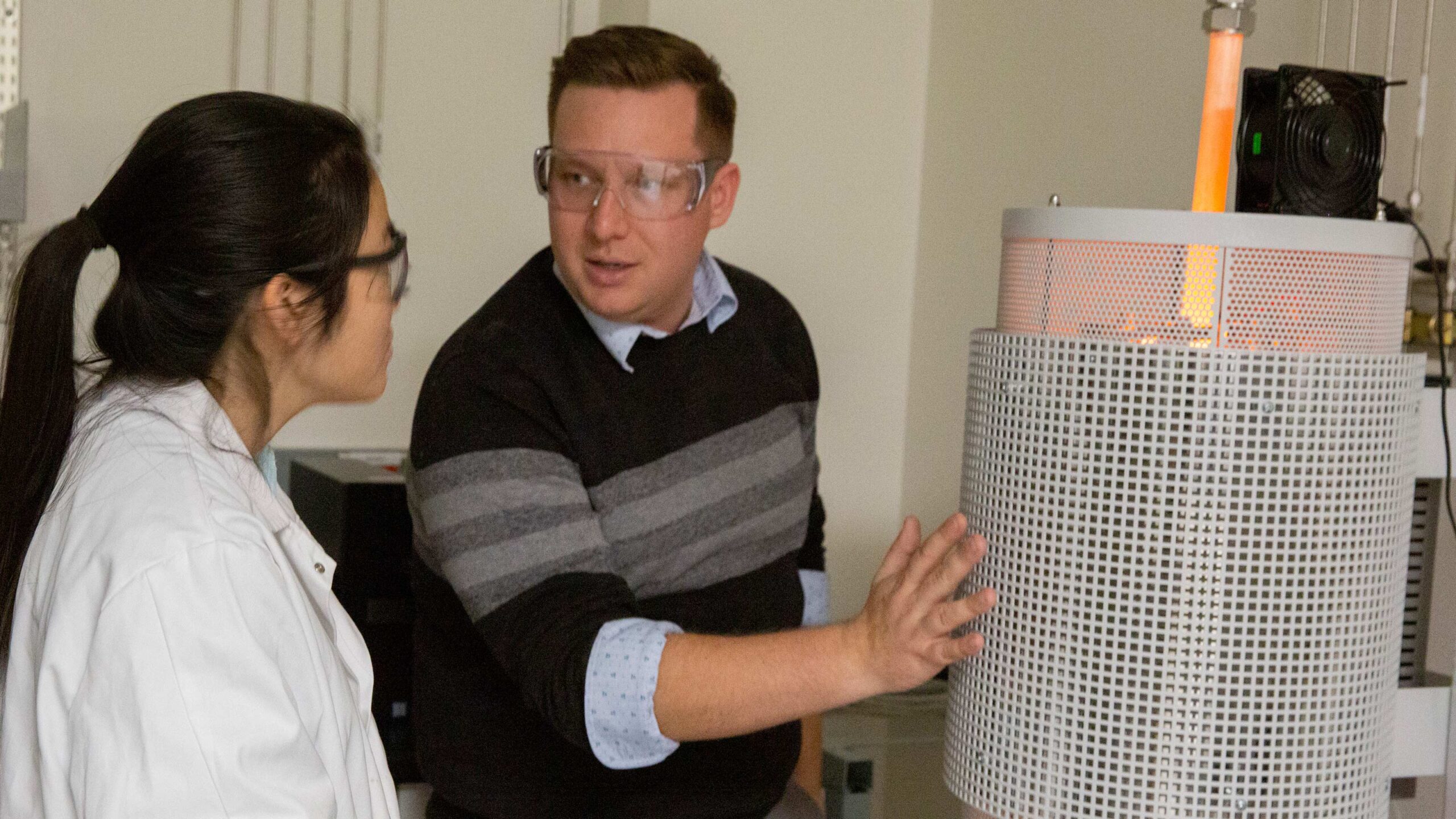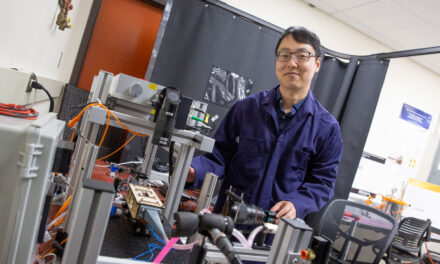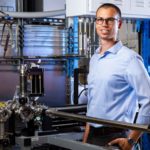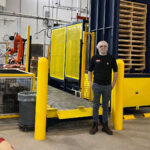
ASU engineering research cleaning up liquid fuel production

Above: Assistant Professor Christopher Muhich (right) is working to advance research and development concentrating solar-thermal power to help eliminate carbon dioxide emissions from the energy sector with the help of an award from the U.S. Department of Energy Solar Energy Technologies Office. Photographer: Connor McKee/ASU
Christopher Muhich, an assistant professor of chemical engineering in the Ira A. Fulton Schools of Engineering at Arizona State University, has been selected to receive a $310,000 award from the U.S. Department of Energy Solar Energy Technologies Office, known as SETO. The support will help to advance concentrating solar-thermal power research and development, and further efforts to eliminate carbon dioxide emissions from the energy sector.
If the project is successful, the findings of Muhich and his research team’s work will enable a significant decrease in the price of carbon monoxide, or CO, production and therefore improve industry’s ability to generate low-cost, clean fuels.
“Decarbonization of the world energy infrastructure requires a transition to renewable resources both in the form of electricity and fuels,” Muhich says. “While much of our energy use can be transitioned to electrical energy, there remains a continued need for liquid fuels for use in airplanes, ships and for storage.”
Muhich says the generation of liquid fuel can be achieved from a combination of hydrogen and carbon monoxide. While the former is obtainable from the electrolysis of water, the generation of carbon monoxide from carbon dioxide, or CO2, remains elusive. So, it is a major step forward to show that solar thermochemical carbon dioxide splitting can provide a practical route to carbon monoxide generation, where concentrated sunlight drives the energy-intensive chemical reaction.
“The concentrated sunlight can be thought of as using a magnifying glass to start a fire, but here we use mirrors to drive the desired chemical reaction,” Muhich says.
Despite the ability of solar-thermal cogeneration systems to generate carbon monoxide, they thus far require very high temperatures — in excess of 1,400 degrees Celsius. So, commercially relevant carbon monoxide production rates create high costs and are technologically challenging.
Muhich’s work aims to decrease the operating temperature by using electric fields and manipulation of charges on the active material surface. The active material will be placed in ionic liquid to form a capacitor and allow charge accumulation/depletion. This changes the underlying thermodynamics and thus allows them to drive the reaction at lower temperatures.
“This project will allow us to take our findings from a simple proof of concept to explore a range of operating conditions, and model the overall system and its economics,” Muhich says.
Muhich’s design will be a prototype reactor that applies a small voltage to cerium oxide immersed in molten salt to generate an electric field, which lowers the required temperature for the reaction. The project targets a 600-degrees-Celsius reduction in the carbon dioxide splitting temperature, making the process feasible for integration in a concentrating solar-thermal power plant.
Muhich was selected as a part of the SETO Fiscal Year 2021 Photovoltaics and Concentrating Solar-Thermal Power funding program, an effort to advance solar energy research and development to find innovative solutions that will enable a decarbonized electricity system by 2035 and a 100% clean energy economy with net-zero emissions by 2050. Muhich’s project is one of several that will research and develop concentrating solar-thermal power technologies that help reduce costs and enable long-duration solar energy storage and carbon-free industrial processes in the United States.
About the Solar Energy Technologies Office
The U.S. Department of Energy Solar Energy Technologies Office supports early-stage research and development to improve the affordability, reliability and domestic benefit of solar technologies on the grid. Learn more at energy.gov/solar-office.



































